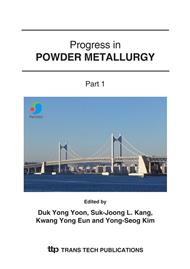p.1477
p.1481
p.1485
p.1489
p.1493
p.1497
p.1501
p.1505
p.1509
P-Type and N-Type Bi2Te3/PbTe Functional Gradient Materials for Thermoelectric Power Generation
Abstract:
The p-type (Bi0.2Sb0.8)2Te3/(Pb0.7Sn0.3)Te functional gradient material (FGM) was fabricated by hot-pressing the mechanically alloyed (Bi0.2Sb0.8)2Te3 and the 0.5 at% Na2Te-doped (Pb0.7Sn0.3)Te powders. Also, the n-type Bi2(Te0.9Se0.1)3/PbTe FGM was processed by hot-pressing the mechanically alloyed Bi2(Te0.9Se0.1)3 and the 0.3 wt% Bi-doped PbTe powders. With △T larger than 300°C, the p-type (Bi0.2Sb0.8)2Te3/(Pb0.7Sn0.3)Te FGM exhibited larger thermoelectric output power than those of the (Bi0.2Sb0.8)2Te3 and the 0.5 at% Na2Te-doped (Pb0.7Sn0.3)Te alloys. For the n-type Bi2(Te0.9Se0.1)3/PbTe FGM, the thermoelectric output power superior to those of the Bi2(Te0.9Se0.1)3 and the 0.3 wt% Bi-doped PbTe was predicted at △T larger than 300°C.
Info:
Periodical:
Pages:
1493-1496
Citation:
Online since:
January 2007
Authors:
Price:
Сopyright:
© 2007 Trans Tech Publications Ltd. All Rights Reserved
Share:
Citation:


